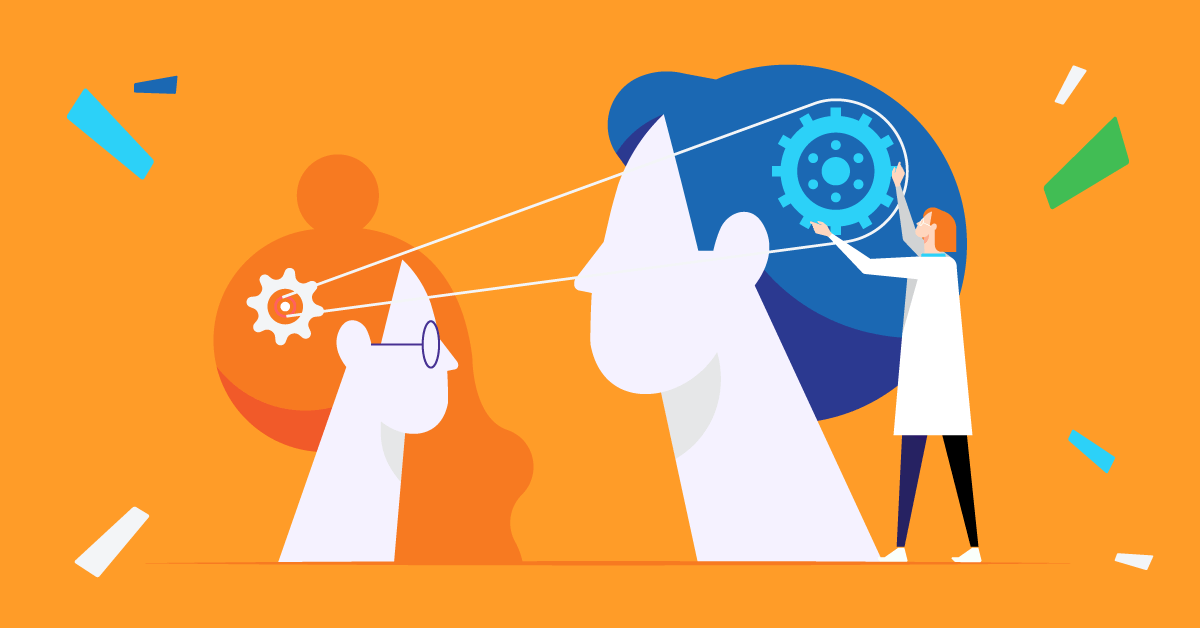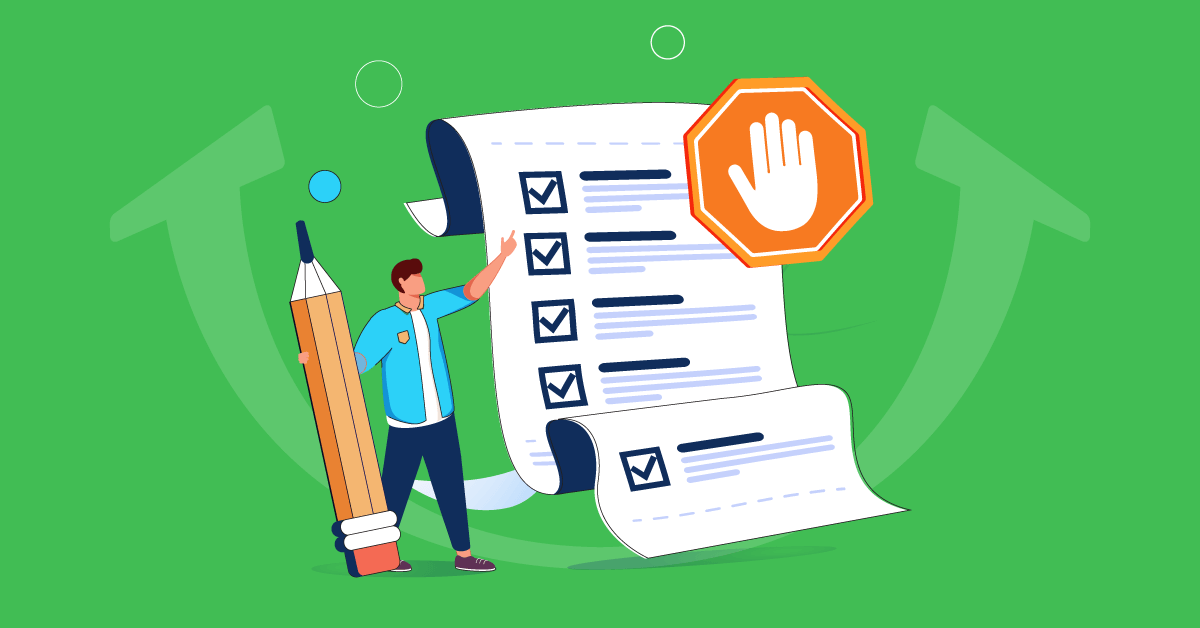Say your team has just completed a course on building customer relationships. The hope is to raise customer satisfaction scores and boost repeat sales.
But back on the job, the fast pace of work and management’s priorities elsewhere leave little time or support for experimenting with new skills. The recent course graduates quickly fall back into the old way of doing things. The training is never mentioned again, and your numbers stay exactly the same.
The disheartening post-training story is all too common in many companies, but it doesn’t have to be. If you want your training strategy to serve company objectives, you need to support learning transfer.
Let’s take a look at what learning transfer is, why it matters, and how you can ensure training turns into action and results in your company.
What is learning transfer?
Learning transfer is when people apply newly learned skills, processes, or knowledge to a new situation.
At work, that means employees know how to use what they learn in corporate training—and use it to achieve company objectives.
Why learning transfer matters
You need people to turn learning into action because you want your company training investments to pay off.
Every good training strategy has clear objectives. For instance, as in the introduction, you want to improve customer retention and increase repeat purchases. That means boosting customer satisfaction numbers. So you send your customer service team and sales reps through relationship building and other soft skills training.
Choosing the right training is only the first step on the path to success though. Even the best content is a poor investment if employees don’t make changes to the way they’re handling customer interactions.
If you want training to have an impact, you need to make learning transfer a part of your strategy. You need to support employees not only in their learning but in their ability and motivation to use what they’ve learned.

How to boost learning transfer
Make transfer part of your employee development from the start. Use training best practices to make the content memorable and build real skills. Then consider the potential problems employees will face implementing them back on the job and establish plans for overcoming them.
Here are some helpful tips for turning learning into practice before, during, and after training.
Before training
Start by making sure the content is relevant and memorable and remove any obstacles employees will face back on the job.
- Match your training to company goals: Courses should be planned in conjunction with your business objectives. If you want to boost sales, your training should involve sales techniques and best practices. If you want to improve your working environment, include diversity, equity, and inclusion training. Doing so will help you reach your objectives. And showing that alignment will also help you build a case for your training budget.
- Align management priorities with the new training: If you want employees to use new skills, those higher up the chain need to support their efforts. Even the most well-intended employee will struggle to try new skills if their boss is demanding they keep the status quo. Articulate how the training will help managers meet their goals so they’ll be supportive.
- Help employees see how the changes will improve their lives: Motivate people to apply what they learn by showing them up front how it will benefit them as well as the company. Include points on how the skills will simplify their work, prepare them for promotions, or improve their work environment in your course descriptions.
During training
Quality learning design is key to helping learners remember the skills and put them into practice. Use these tactics to make learning “stickier”:
- Make training engaging: If people don’t find the content interesting, they’re not likely to get through it, let alone remember and apply it. Use best practices for designing engaging training to help the content sink in. For instance, get their attention with a variety of media and make it accessible with microlearning. Get them to interact with the content through things like tests and quizzes and gamification.
- Test often: Enhance learning transfer in eLearning by building in frequent opportunities for learners to test their knowledge. This can be multiple choice quizzes at the end of each module or quick question and answer forms following each new concept. Frequent testing compels people to recall and apply what they’re learning.
Looking for an eLearning platform to enhance learning transfer?
Create tests, quizzes, and assignments in no time with TalentLMS.
The training platform that users consistently rank #1.
- Include simulations: Give learners hands-on experience with the skills instead of only theoretical knowledge. When they get real practice in a safe environment, it builds “muscle memory” that makes it easier to remember to do them in the moment.
- Consider on-the-job training: Take hands-on experience a step further by incorporating learning into employees’ workday. On-the-job training uses traditional training methods like mentoring and workshops to guide learning that happens as people do their jobs. This is a good option for onboarding new employees and getting them up to speed as well as training current employees on new tools or processes.
After training
Double down your efforts by providing a work environment that supports the training. Here are a few ways you can make learning application a part of the employee experience following training.
- Offer ongoing support from managers: Employees shouldn’t be learning in a vacuum. Make sure their managers know the content they’re learning so they can answer questions and provide support and feedback for employee efforts. Train leaders in good talent management techniques so they’ll understand how to encourage employees’ new skills.
- Build the new behaviors into employee reviews: Motivate employees to continue working on their new skills by adding feedback on their progress to their regular performance reviews.
- Set post-training goals and provide support: At the end of the training, have learners create specific goals around applying the skills or knowledge. Concrete objectives make it easier to remember how and when to use the skills.
- Provide after-training support: Offer resources employees can use to review concepts or ask questions. These can include follow-up sessions to review the content, a library or database for quick access, or ongoing access to the actual course through your LMS.
Meet TalentLibrary™
A growing collection of ready-made courses that cover the soft skills
your teams need for success at work
![]()

Can you measure learning transfer?
How can you know learning transfer is happening at work? You know you must set and measure training goals any time you implement new courses, but typical training KPIs don’t always tell the whole story. For instance, course completion rates don’t measure whether someone has learned the content, let alone whether they use that knowledge.
You won’t be able to measure learning transfer right after training. If you want useful data, you’ll need to track it over time. You can use your LMS reports and other training evaluation tools, but you’ll need to dig deeper than just quiz scores and completion rates.
Start by looking at test and quiz scores to make sure people understand the content. Then follow up with post-evaluation surveys that ask employees about their experience using the skills on the job. You can employ 360 surveys to get feedback from managers and colleagues on how well the skills are being employed.
And finally, if your training is tied to desired business results, track those metrics over time to see if they’re improving.
Support for learning shows support for your employees
Let’s return to our newly trained customer service team. Say that when they get back to work, instead of being bombarded with demands to keep up with quotas, they’re supported with the following:
- Skill review sessions in their weekly team meetings
- The opportunity to share their experiences using the skills they acquired
- Company celebrations when customer satisfaction scores are reviewed quarterly
With these clear connections between training and work, employees will feel motivated to use their skills to keep customers happy. They’ll also be inspired to keep growing their careers within your company.
That’s because providing follow-up support for training not only helps employees remember and apply the skills, but it also shows employees you support them. And employees who feel valued have more reason to stay dedicated to their company and excel at work.
| Tags: learning and development,Learning Goals & Objectives



